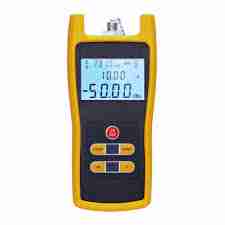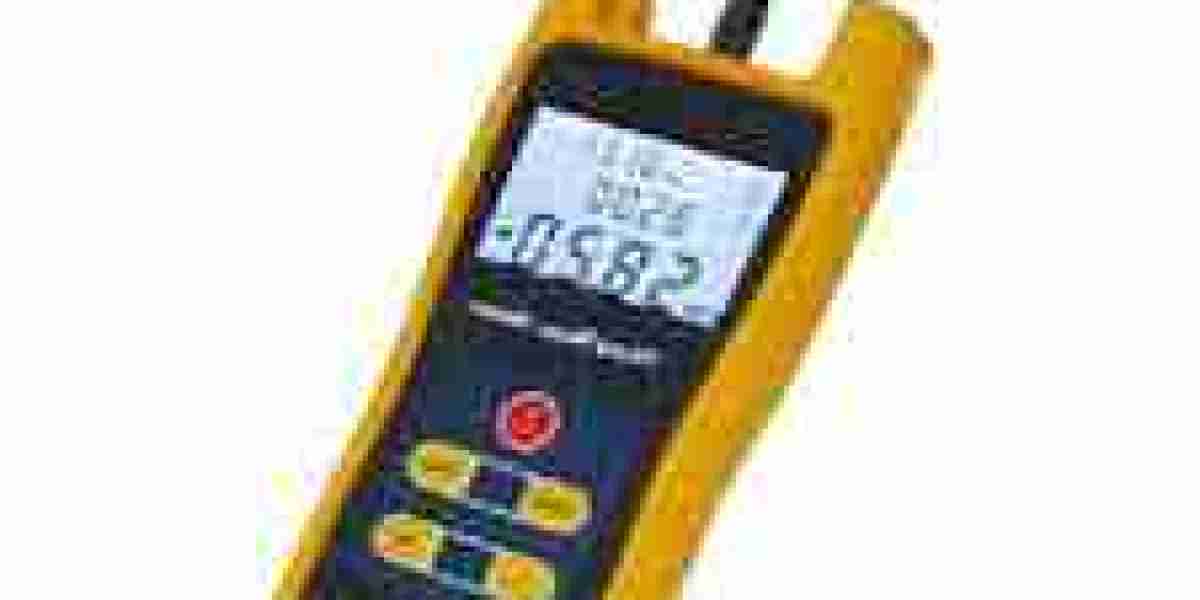The optical power meter market is undergoing a transformative phase, marked by the introduction of cutting-edge products, technological integration, and strategic acquisitions. With the global rollout of 5G, expansion of data centers, and increasing demand for fiber optic infrastructure, new tools are being developed to meet rising performance requirements. This article explores the most impactful recent developments shaping the market.

1. Launch of High-Performance Portable Meters
In March 2023, Santec Corporation introduced the OPM-200 power meter, delivering an exceptional dynamic range from +8 dBm to -80 dBm. This handheld device offers high accuracy vital for modern telecom applications, addressing the need for field-portable, precision equipment.
Late 2022 saw Jonard Tools release the OFI‑100, a 3‑in‑1 fiber identifier combining optical power measurement, visual fault localization, and direction detection. It enables technicians to perform diagnostics without disrupting live networks—a significant improvement in field safety and workflow efficiency.
2. Rise of Compact, Multifunctional Devices
The push toward compact, multifunctional meters continues. The OPM‑200 and OFI‑100 reflect a broader market trend: converging OTDR, power measurement, and fiber identification into portable tools. VerifiedMarketReports notes advancements in miniaturization and accuracy, especially in telecom and R&D environments—testimonials to this evolution.
3. Surge in Multi‑Channel Power Meter Solutions
Markets are increasingly adopting multi-channel meters capable of monitoring numerous fibers simultaneously—a necessity in data centers and high-speed networks. The global multi-channel optical power meter market reached USD 1.6 billion in 2023 and is expected to grow at a 6.7% CAGR through 2030. These systems enhance efficiency and reliability in large-scale deployments.
4. Strategic Acquisitions for Technology Integration
Beyond hardware, strategic M&A activity is reinforcing market positions. In January 2023, Thorlabs acquired JML Optical Industries, boosting its custom optics and precision components portfolio. Such moves enhance innovation capabilities and provide comprehensive testing solutions.
5. Asia‑Pacific as a Focus for Growth
Asia‑Pacific is quickly emerging as a key growth region. With dynamic fiber expansion and 5G rollouts in China, India, and Southeast Asia, manufacturers are developing cost-effective solutions tailored for these markets. Germany emphasizes energy efficiency and automation, while India focuses on low-cost instrumentation and local manufacturing .
6. Enhanced Automation and Calibration Services
Recent market developments highlight the importance of calibration and maintenance—crucial for accuracy across wavelengths. Companies are investing heavily in calibration services and automated testing features, which reduce downtime and improve field performance.
7. Integration with Digital and Smart Features
Optical power meters are gaining smart capabilities: AI-based diagnostics, network management system compatibility, and cloud data integration are becoming standard. These digital enhancements complement the trend toward portable, multifunctional devices, offering predictive maintenance and real-time analytics.
8. Competitive Landscape and Market Forecast
Market forecasts project significant growth: some reports estimate the overall optical power meter market at USD 170 million in 2023, rising to USD 290 million by 2032 (6% CAGR). Others report a massive USD 3.29 billion valuation in 2023, with a 14.9% CAGR to USD 11.4 billion by 2030. Asia‑Pacific is consistently identified as the fastest-growing region.
Leading players include Yokogawa, Keysight, Anritsu, Thorlabs, Viavi, Santec, Fluke, and more—all continuously innovating through new products, mergers, and regional expansions.
9. Addressing Industry Challenges
Despite these positive strides, the market still faces pricing, maintenance, calibration, and skill shortages. However, recent tool releases and service launches are designed to mitigate these issues with ruggedness, user-centric design, and automation.
Conclusion
Recent developments in the optical power meter market are characterized by portable, multi-functional, digitally integrated devices, multi-channel solutions, and regional focus—especially in Asia-Pacific. Strategic M&A activity and calibration services further strengthen these innovations. Together, they suggest a market rapidly evolving to meet escalating demands from telecom, data center, industrial, and smart infrastructure sectors. As more advanced tools enter the field, industry growth — supported by technology and expanding connectivity — is expected to accelerate through the coming decade.




